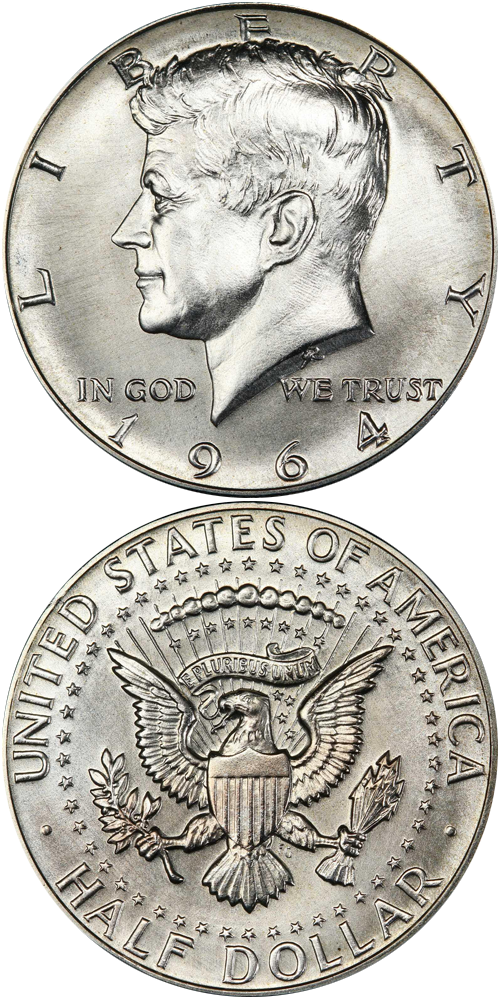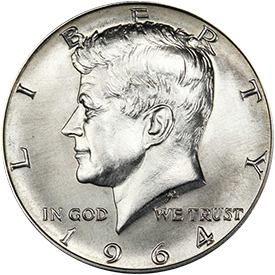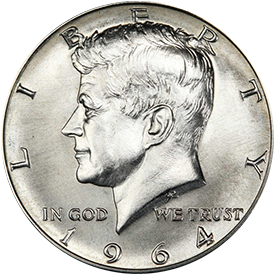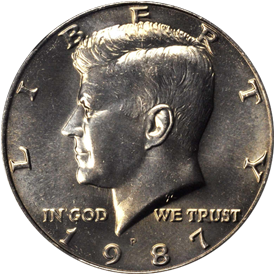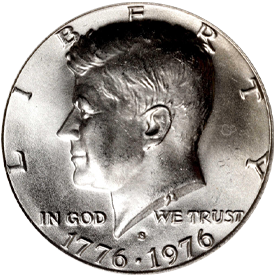Less than a week after President Kennedy’s tragic assassination in Dallas, Texas, Mint Director Eva Adams contacted chief engraver Gilroy Roberts informing him that the Treasury was proposing placing the portrait of the late President on one of our nation’s circulating coins. Approval of this move was a virtual certainty, and over the next four weeks, work on preparing dies proceeded at a rapid pace. The portrait from the inaugural medal was used on the obverse in order to save time, and the Presidential coat of arms appeared on the reverse design by Frank Gasparro. Following Congressional approval and Johnson’s signature in late December, striking of the new half dollars began in January of 1964.
Some 430 million pieces were struck at both the Philadelphia and Denver mints in .900 fine silver, and nearly all were saved as mementos of the martyred President. The coin was not only popular in the United States, but overseas as well, and many made their way to Europe and Asia to satisfy the ardent demand.
The Kennedy half’s arrival coincided with the coin shortage and silver crisis of 1964-65, and in 1965, the “sandwich” coins arrived. Dimes and quarters were composed entirely of a copper-nickel cladding over a copper core, while the half dollar retained some 40% of its composition in silver and 60% in copper. This unique metallic mix lasted only until 1970, and the following year, all silver was removed from the half dollar as well and substituted with nickel, matching the alloy used in the dime and quarter.
Unfortunately, two rapid changes in the composition of the half dollar led to confusion on the part of the public, and as a result, nearly all Kennedy halves were “saved” and the coin virtually disappeared from circulation. In 2002, striking of half dollars for general circulation ended, and since then, half dollars have been produced only for inclusion in Proof and Mint sets for collectors, or for sale at a premium.
